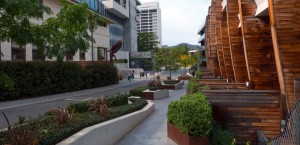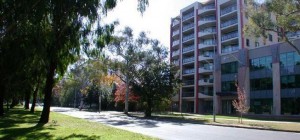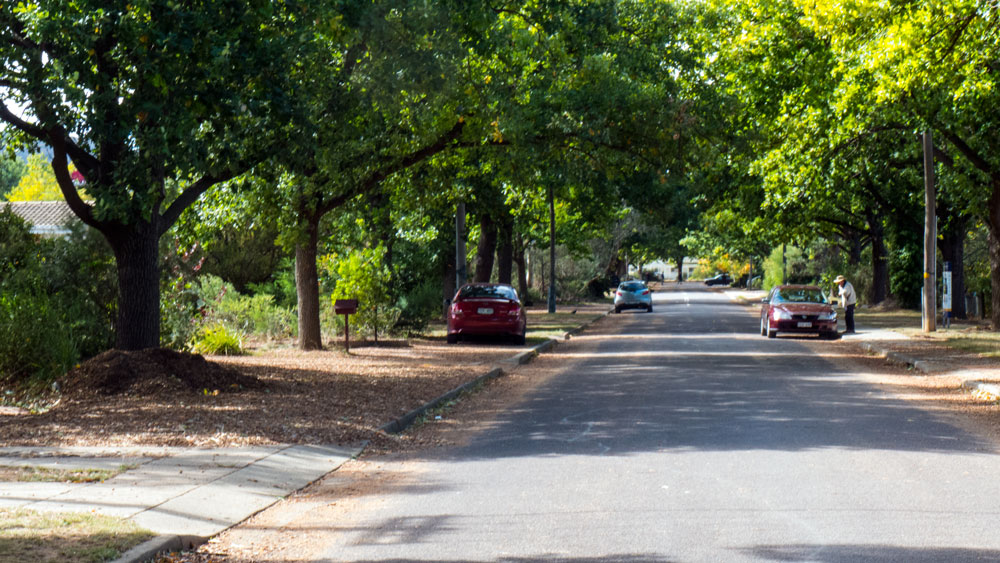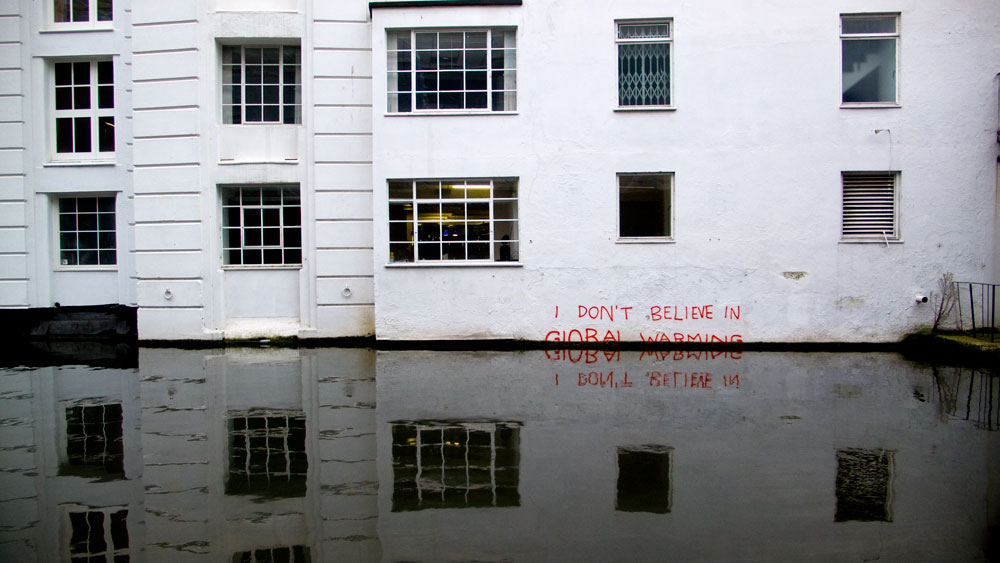Recent Canberra Government development announcements
In recent weeks and months there have been several significant development proposals announced by the territory (ACT) government in Canberra. If all the government’s ambitions come to fruition then residents about to witness some very serious alterations and additions to the make-up of several parts of the inner city urban fabric.
 The latest is the call for expressions of interest for the design the new convention centre precinct.
The latest is the call for expressions of interest for the design the new convention centre precinct.
As the Canberra Times article highlights (click here), this will indeed transform this high profile area just off the present Civic commercial centre.
From the first impressions when this development is viewed in conjunction with those planned for the western side of Commonwealth Avenue, that we are about to see some major infrastructure dominate areas that are close to the lake and to date include some now green spaces.
 On the other side of the avenue that leads to Parliament, there are the more complex proposals being worked through for the city to the lake developments. These will see more building and precinct developments between Acton and the lake including some form of land-bridge over the road and extensive facilities around the west basin of the lake.
On the other side of the avenue that leads to Parliament, there are the more complex proposals being worked through for the city to the lake developments. These will see more building and precinct developments between Acton and the lake including some form of land-bridge over the road and extensive facilities around the west basin of the lake.
Meanwhile work has already commenced on the enhancement of the street, Constitution Avenue, joining Civic to the Russell/Defence precinct. This will see new property developments in Campbell as well as along the route back to Civic. The street is presently already full of signage and construction works as the avenue is being widened to make it more than just a through-road.
 And there’s more. The government is committed to introducing light rail up Northbourne Ave to link Civic to the new north-western suburbs around Gungahlin. This will mean there will be loads of new developments along this corridor. More recent conversations have surfaced with people expressing heritage concerns over some government housing given historic design features.
And there’s more. The government is committed to introducing light rail up Northbourne Ave to link Civic to the new north-western suburbs around Gungahlin. This will mean there will be loads of new developments along this corridor. More recent conversations have surfaced with people expressing heritage concerns over some government housing given historic design features.
Further out there are proposals for new residential developments on the side of the established suburb of Yarralumla and many more for new suburbs on locations that I am not very familiar with.
All these proposals should be supported. These announcements and plans should be advanced. All these should be embraced with enthusiasm to see the national capital become an even more dynamic city for residents and for visitors.
All these positive endorsements come with some very serious concerns and therefore with requests for the government as it goes about the business of the provision of new buildings and infrastructure, including its open spaces and other amenities.

Last week I went for a wander through the new suburbs within the new Molonglo area, in particular the new suburb of Wright. The first impressions are that this will be a very desirable suburb to live as it has quite a pleasant atmosphere. Much of it is still under construction and any greenery is very new. Aesthetically there is a sameness about the housing styles. There’s a lot of beige and grey and far too much bland render being applied.
While making observations of the streets, the housing and the infrastructure, my thinking turned to all the years of resources that have been spent on research into sustainable settlements, the huge amount invested in Cooperative Research Centres (CRC), the work undertaken and continuing through the CSIRO (click here), and much much more.
It was while contemplating the mountain of research and countless reports, the endless and innumerable seminar and conference papers, and the continuous visits by overseas urban and planning experts, that I looked at the these new suburbs to see what lessons we have learnt. So how much of this research is being implemented?
In short: Not much.
The amount of greenery around these houses will be much less than older suburbs. There were very little signs of water harvesting. Occasionally there was a lone solar panel but nothing compared to what is now being installed elsewhere. There was the token amount of functioning landscape works in the public areas but as to what has been insisted on and/or built into the private and residential areas, there was barely any. Had anyone heard of green infrastructure? Had anyone taken into account all the research on the potential for heat island effects in these new suburban developments? Have they considered the consequences for the residents’ health and well-being and the insurance claims that will one day be launched against the planning authority for the uniformed decisions they continue to hand down despite all the evidence to the contrary.
If there was a climate change adaptation realistic check list to be filled out on just how these new suburbs are being developed, then I suspect the rating would be the lowest possible.
In the last few years there have been numerous calls by residential groups to bring some sense to the redevelopment of the older suburbs of Canberra. In my immediate area, there was the great Marsden Street battle – click here. (that’s Marsden Street below)

Surprisingly the most talked about problem was not simply that the local planning authority was seen as being completely out of touch with the Canberra communities or that the time had come for there to be new style of planning regime introduced based around real community engagement (click here).
The even more serious concern was that residents were continually being confronted by badly designed new developments. Badly designed in that they were aesthetically insulting, that they were not attractive, that they detracted from the ambience of the suburb, and that they were not addressing the government’s own policies on climate change and sustainability.
This applies to the many bland and ugly constructions that were now finding their way into the older suburbs and to the many totally functional but uninteresting commercial buildings that now lines the major arteries of the city.
The concern remains that the planning authority, and through them, their friends in the development industry are not taking seriously all the issues to deal with climate change adaptation in all aspects of development.
The ACT government has made all sorts of announcements about dealing with climate change. Yet there is a complete lack of ‘walking the talk’ when it comes to the government ensuring that climate change adaptation issues are fundamental requirements in all the city’s developments.
This government, or at least its planning agencies that set the requirements, do not take seriously their own government policies and are willfully blind to all the international research. The current outcomes demonstrate that this government continues to ignore or at best pay lip service to the enormous amount of research by the CSIRO and numerous agencies here and internationally on how these climate change issues need to be addressed in all aspects of our urban areas.
Governments have a role to play here. It is called leadership.
————————————-
On the surface at least the list of announced development proposals for Canberra are welcomed and encouraged. However, and it is a big however, there are several matters that need to be put on the table before anything progresses.
Design is important: It is totally feasible to ensure that an innovative level of aesthetics within all of these precincts is a mandatory requirement. This city should be attracting visitors to see the innovations in architecture and place making and infrastructure. So many other cities have lost this opportunity and have become just another boring international metropolitan city. Canberra has one more chance to get this right. Let’s be creative and innovative.
Climate Change Adaptation is not an option: All developments, be they buildings, precincts or infrastructure need to have a set of climate change adaptation measures included from the very first planning stage. These measures need to be mandatory requirements and are not to be watered down or negotiated away as the developments progress.
Public Transport must be enhanced: The light rail or its equivalent is embraced as being a service that is now well overdue to be servicing major points throughout the city. A driving force behind the new transport system should be that it is environmentally friendly and not dependent on carbon based energy.
Green Infrastructure is to be enhanced, not reduced: Green Infrastructure describes the network of green spaces and water systems that deliver multiple environmental, economic and social values and benefits. Green Infrastructure includes parks and reserves, backyards and gardens, waterways and wetlands, streets and transport corridors, pathways and greenways, squares and plazas, roof gardens and living walls, sports fields and cemeteries. Green Infrastructure provides and connects vital life support systems for urban environments. (definition burrowed from SA Govt)
Beware of Green Wash: Planning agencies continue to be guilty of applying green-wash. This practice and all associated star rating systems are to be avoided. The relevant research is out there in bucket loads and it should be incorporated into designing some mandatory requirements to be addressed.
Solar: These developments will bring about a lot of roof space that could be used to house a multitude of solar panels to assist with energy needs. The view across the roof tops of any CBD, including Canberra, is of air conditioners. Canberra does not need to have solar panels in our rural areas when all these new roof tops could provide the equivalent.
Heritage: Heritage remains important but the government units on Northbourne Ave have passed their use by date.
Social Housing: Adequate social and supported housing must be maintained and enhanced in the inner Canberra suburbs. These Northbourne developments should not be used to move such provision off to the outer suburbs.
Northbourne Landscape Opportunities: The trees along Northbourne Ave are magnificent. However the whole of Northbourne Ave could be redesigned to incorporate even more green infrastructure, allow for cars, pedestrians and cyclists as well as light rail or its equivalent. It is a complex design question that requires creative and innovative landscape solutions. The question is not about whether the trees may need to be removed or not – it is how the newly designed Northbourne corridor could have even more replacement trees and improved ambience.
————————————
The photograph at the top of this post is a photograph I took in London of an artwork by Bansky. The message is that fools are the ones to ignore climate change.
In this case Canberra may not be subject to rising waters, but the symbolism is obvious. If the Canberra government wants to allow its city developments to continue to be progressed without addressing all the relevant issues of climate change adaptation, then the future generations will be required to pay an even larger price for this blatant and willful neglect.
The ACT government is to be congratulated for the creative innovations to bring about the major developments in Canberra’s urban structure. The same government should now take this golden opportunity to show leadership and intelligence and creativity in ensuring the fundamentals for these projects are aligned with the huge and significant environmental issues that society now needs to address.
It is now over to our elected leaders.
———————————-
Paul Costigan, 11 June 2014
